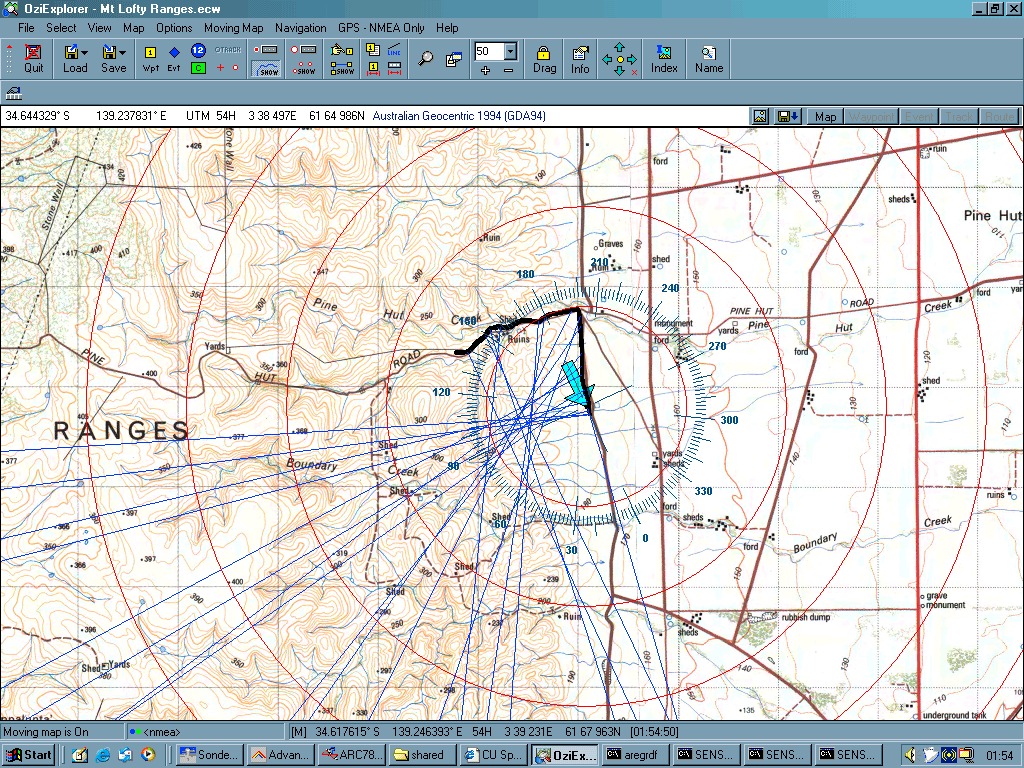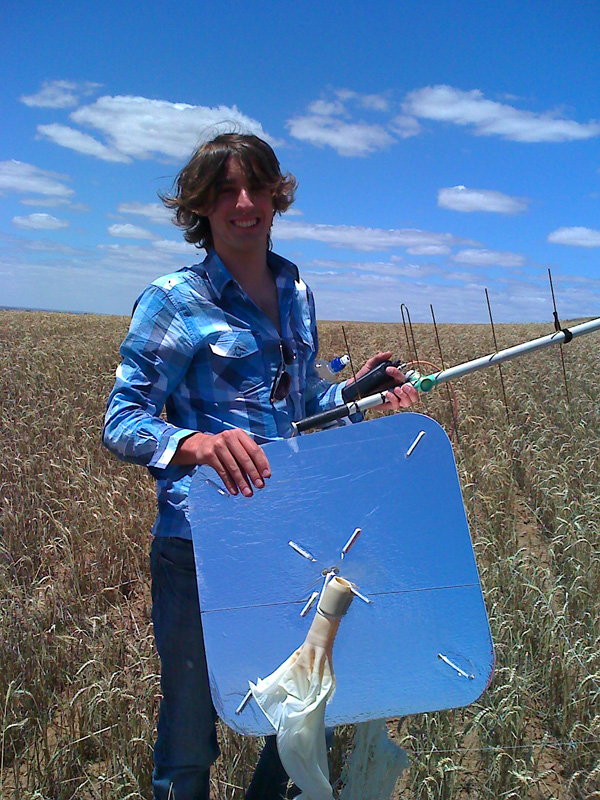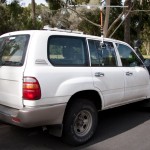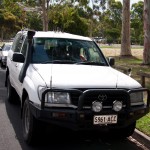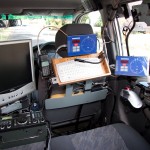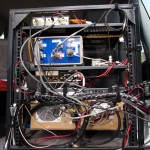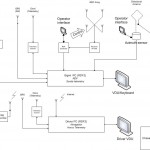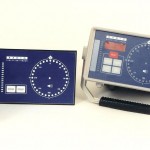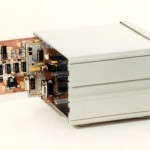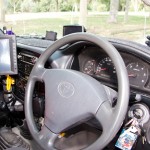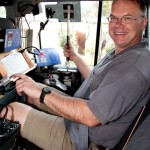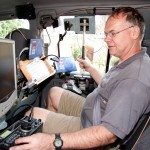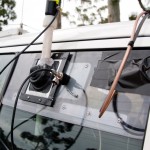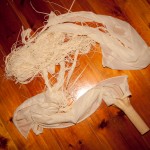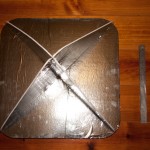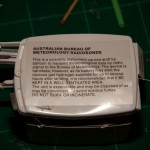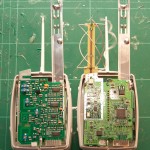RDF, balloon chasing more updates
A rather large update this time!
I recently caught up with one of the many hams who have emailed me (thanks everybody!) regarding the project - Adrian, VK5ZSN. Adrian has lots of experience in chasing BOM sounding balloons, and has recovered many of them in the past. As well as invaluable input & assistance, Adrian has given me a bunch of stuff for the project - including radar reflectors and radiosondes. He's also offered to test my yagi on a network analyzer so I can work out if it's performing as well as it could be.
Adrian was also keen to show me his RDF setup - a Toyota Land Cruiser kitted out with an amazing array of radio's, computers & custom electronics that Adrian has put together. At the heart of the setup is Adrian's radio direction finder module - a system that Adrian came up with some time ago, it interfaces with both a rotating beam yagi antenna, and performs Doppler based direction finding. The Doppler array (4 1/4waves on the truck roof) is able to give an instantaneous bearing to a radio source without requiring manual input. The output from the system is plotted to a GPS tracked map, to triangulate the location of the source.
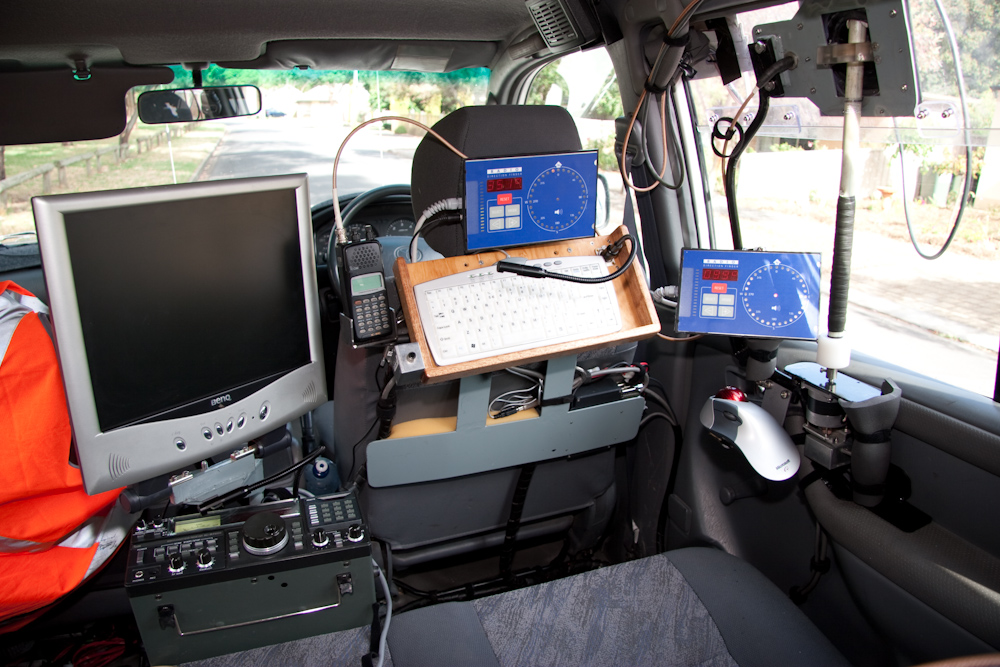
At the controls of Adrians RDF truck
To demonstrate the system, Adrian took me out to chase one of the 2 daily BOM balloons. Predictions run with the CUSF flight predictor suggested that the balloon would land somewhere near Sedan, a manageable distance from Adelaide. Our BOM primarily launches analogue radiosondes (Vaisala RS92K) - these 'sondes do not include GPS receivers, they are tracked by ground based radar. This meant we wouldn't be able to track the Sonde's course by GPS, the only way to locate the 'sonde is via RDF techniques.
We headed out towards Sedan hill, so that we would have a good vantage point & be able to track the 'sonde as it came down. No problems up until this point - I was operating the RDF equipment, after a short while spent learning to work everything, I was confident that we had a good idea of where the balloon was. However, we'd forgotten to start the radiosonde decoding software at the beginning of the flight, and due to the very limited information broadcast by the analogue 'sonde in question, we didn't know if the balloon was still ascending, or if it had started to descend.
A short while after we arrived at Sedan hill, the signal faded, then abruptly disappeared. Unsure if the 'sonde had landed or if it had failed, we set off down the last vector we'd plotted. 10 minutes later, we still hadn't heard the signal, until we passed a field & I heard one of the radios in the truck pick it back up again - but this time on a totally different frequency! It looks as though the bump on inpact had upset the analogue radiosonde's crude transmitter (adjusted with trimpots by the looks of things) & shifted its frequency. A short while & a few vectors later, we were quite confident we'd found it.
A short trek out into a wheat field netted us the radiosonde & radar reflector, and a very burst balloon.
As well as the analogue radiosonde we recovered, I have in my possession a more sophisticated digital 'sonde that Adrian gave me. Whilst the temperature and humdity sensors these carry are good for a single use only (needing calibration), the pressure sensor still functions perfectly - I powered up the radiosonde & decoded it's output, and it was reporting 14.7 PSI. I'm interested to see if I can extract one of these pressure sensors and interface it with my Arduino flight computer.
I've also started work on a daemon to plot information directly from my telemetry in OziExplorer, giving me the position of my balloon live on a map without needing an internet based service such as Google Maps or Google Earth, as internet access probably won't be available in regional areas. OziExplorer provides a great API that I'm using to do this.
Steve, another balloon enthusiast from RandomSolutions has kindly donated a GPS module which I'm planning to use on a test balloon flight. I'm waiting on my balloons from Kaymont, I suspect shipping may have been delayed given the Christmas rush.
A few more photos of the RDF truck & balloon below:
- Adrians RDF truck
- Adrians RDF truck
- At the controls
- Adrians RDF equipment
- Adrians RDF truck block diagram
- Adrians RDF unit
- Adrians RDF unit
- Drivers seat
- Adrian manning the contols
- Adrian manning the controls
- Through-window beam mount
- Remnants of the BOM balloon
- Radar reflector
- BOM radiosonde
- Analogue (left) digital (right) sondes
